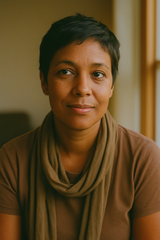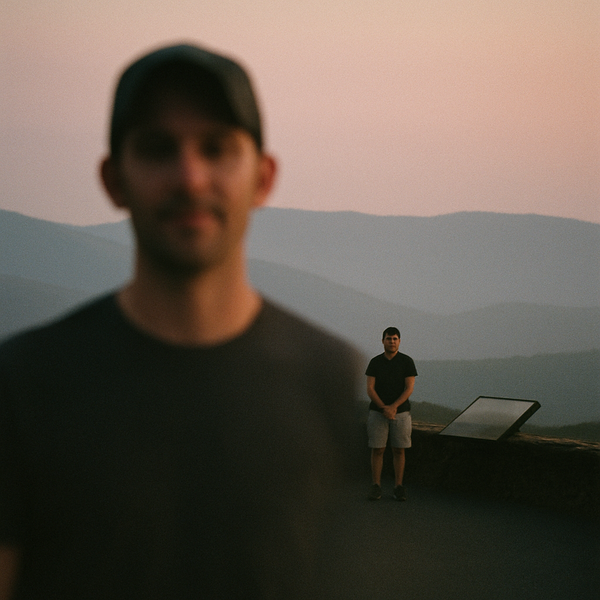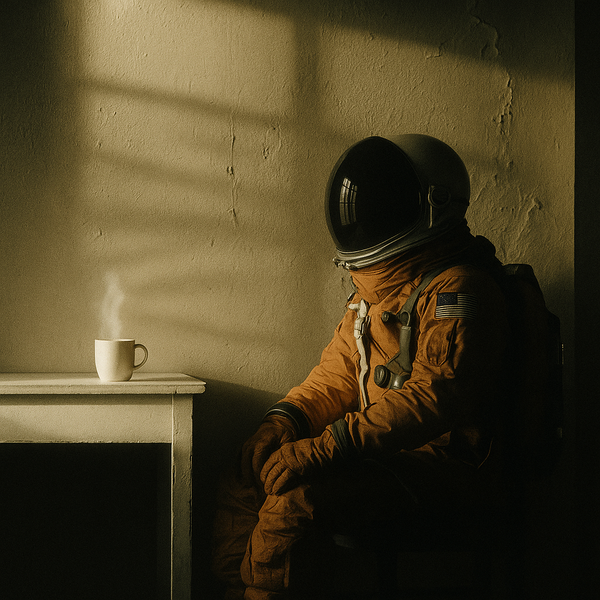Geo-Blocking, Art, and Protest: The Complex Role of Artists in Political Activism

The first time I heard about musicians removing their songs from Israeli streaming services, I was sitting in the park ordering my coffee from an app and wondering why they stock three different oat milk brands. It struck me how we live in an age where both coffee preferences and political protests can be executed through digital platforms, where the same technology that delivers your morning coffee can become a tool of resistance.
Paramore and Hayley Williams recently joined the "No Music For Genocide" campaign, geo-blocking their music from Israeli streaming services. The movement, which began gaining momentum in 2024, represents something peculiarly modern: artists using the infrastructure of global capitalism—Spotify's algorithms, Apple Music's regional settings—to make political statements. It's a form of protest that would have been incomprehensible even twenty years ago, yet it follows patterns of artistic resistance that stretch back centuries.
The Digital Picket Line
When Williams announced her participation in September 2025, she joined over 5,000 artists who had already signed on to the campaign. The mechanism is straightforward: musicians request that streaming platforms restrict access to their music in Israel, citing opposition to what they characterize as genocide in Gaza. It's fascinating how this works technically—the same geo-blocking that prevents me from watching certain Norwegian shows in America now serves as a political instrument.
What strikes me most about this campaign is its peculiar intimacy. Unlike refusing to perform in a country—which affects perhaps thousands who might attend a concert—geo-blocking removes music from the daily routines of millions. It withdraws from the morning commute, the gym session, the background of dinner preparation. I remember there is a saying about small streams making great rivers, but this feels more like removing individual drops from an ocean, hoping someone notices the absence.
Historical Echoes, Digital Methods
Musicians have long wrestled with art and politics. During apartheid, artists boycotted South Africa; Paul Simon famously broke that boycott to record Graceland, sparking debates that continue today. The difference now is the granularity of control. An artist can maintain their music's availability in Tel Aviv while removing it from settlements, or vice versa—though most platforms don't offer such precision, defaulting to national boundaries that rarely align with political nuance.
The campaign explicitly connects to the Boycott, Divestment, Sanctions (BDS) movement, positioning itself within a longer tradition of economic and cultural pressure. Yet there's something distinctly 21st-century about protesting through playlist curation. It reminds me of how my teenage nephew organizes his entire social life through Discord—the tools shape the resistance.
The Effectiveness Question
Americans often ask me what Europeans think about their politics, expecting some unified perspective that doesn't exist. Similarly, measuring the effectiveness of geo-blocking as protest requires acknowledging multiple, often contradictory truths. The campaign claims victory in raising awareness; critics point out that VPNs exist, that music piracy remains simple, that the most affected are often those already sympathetic to Palestinian causes.
During a recent conversation with a Finnish friend who works in music licensing, she noted how geo-blocking creates strange paradoxes. A teenager in Jerusalem who loves Paramore might interpret their absence as either a call to action or a personal rejection. The same gesture reads differently depending on where you stand—literally and figuratively.
What's particularly interesting is how the campaign navigates the distinction between governments and populations. Paramore had previously emphasized that supporting Palestinians doesn't equate to antisemitism, a careful dance of language that reveals how charged these discussions remain. The band's statement during their 2024 tour explicitly called for humanitarian aid while rejecting what they saw as false equivalences.
The Artist's Dilemma
There's something profoundly American about believing your consumer choices constitute political action—I mean this descriptively, not dismissively. The "No Music For Genocide" campaign extends this logic: if purchasing power is political power, then withholding cultural products becomes a form of protest. Yet it also raises questions about art's role in conflict zones.
I think of Daniel Barenboim's West-Eastern Divan Orchestra, which brings together young Israeli and Arab musicians, creating dialogue through shared performance. That model suggests art as bridge; the geo-blocking model positions art as leverage. Both can coexist, but they imagine very different relationships between culture and conflict.
Williams and Paramore aren't newcomers to political stances. They've rejected honors from Tennessee over anti-LGBTQ+ legislation, paused performances to condemn political figures, consistently used their platform for advocacy. This pattern suggests artists who view their work as inseparable from their values—a position that feels increasingly common among younger musicians.
Digital Borders, Human Consequences
The most profound aspect of this campaign might be how it reveals our strange new geography. National borders, increasingly porous in physical space, become rigid in digital ones. A song available in Ramallah might be blocked in Tel Aviv, though the cities sit mere miles apart. We've created a world where cultural products respect boundaries that people increasingly don't.
What I find most striking is how this campaign makes visible the usually invisible architecture of digital distribution. Most of us never think about why certain content is or isn't available in our location—it simply is or isn't. By weaponizing these restrictions, artists force us to notice the infrastructure we typically ignore.
Looking Forward
As I write this I wonder what this campaign signals about art's future role in political movements. Will we see more granular protests—songs available only on certain days, in certain cities, to certain demographics? Will artists develop ever more sophisticated ways to encode their politics into their distribution?
The "No Music For Genocide" campaign represents something new: protest through absence, resistance through regional settings, solidarity through streaming restrictions. Whether it changes anything in Gaza remains debatable. What's certain is that it changes how we think about the relationship between art, technology, and political action. In an age where presence is increasingly digital, absence becomes a particularly modern form of speech.
References
- https://www.nme.com/news/music/paramore-and-hayley-williams-join-no-music-for-genocide-israel-boycott-3895018
- https://consequence.net/2025/09/paramore-hayley-williams-israel-boycott
- https://www.loudersound.com/news/paramore-hayley-williams-join-no-music-for-genocide-israel-campaign-2025
- https://www.nme.com/news/music/paramore-call-for-gaza-aid-donations-we-do-not-believe-that-support-for-our-palestinian-friends-and-family-is-anti-semitism-3760635
- https://en.wikipedia.org/wiki/No_Music_For_Genocide
- https://bluntmag.com.au/news/hayley-williams-joins-no-music-for-genocide-removing-music-from-streaming-services-in-israel
- https://www.hotpress.com/music/paramore-and-hayley-williams-join-no-music-for-genocide-boycott-of-israel-23110054
- https://en.wikipedia.org/wiki/Hayley_Williams
- https://consequence.net/2024/02/paramore-reject-tennessee-honor-allison-russell
- https://www.industrypreviews.com/2025/09/25/paramore-and-hayley-williams-join-no-music-for-genocide-israel-boycott
- https://www.newarab.com/news/paramore-joins-no-music-genocide-israel-boycott-campaign
- https://voi.id/en/musik/518269
- https://www.hindustantimes.com/world-news/us-news/paramores-hayley-williams-pauses-iheartradio-festival-set-to-condemn-trump-project-2025-101726938817592.html
Models used: claude-opus-4-1-20250805, gpt-image-1




